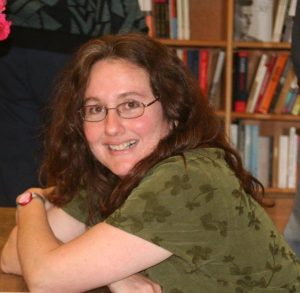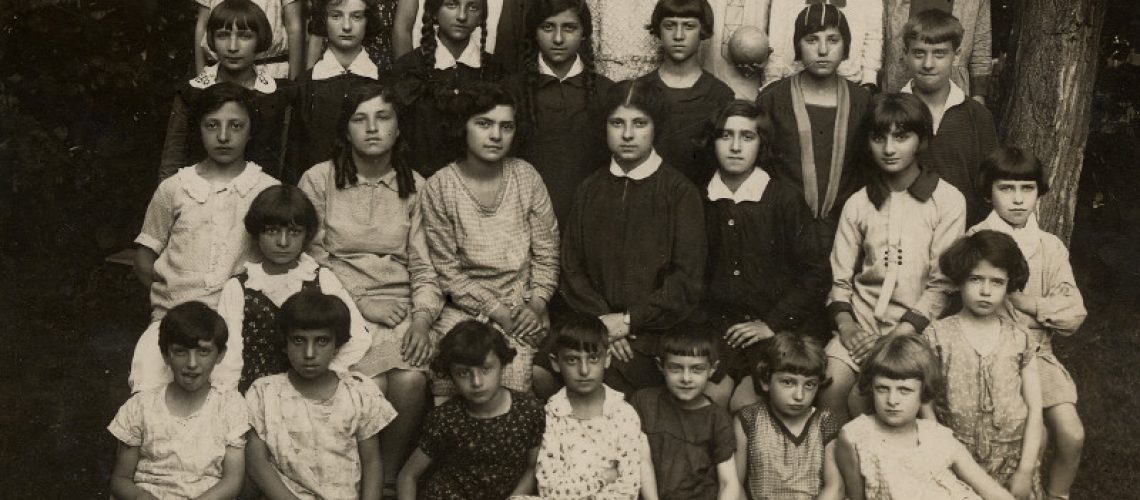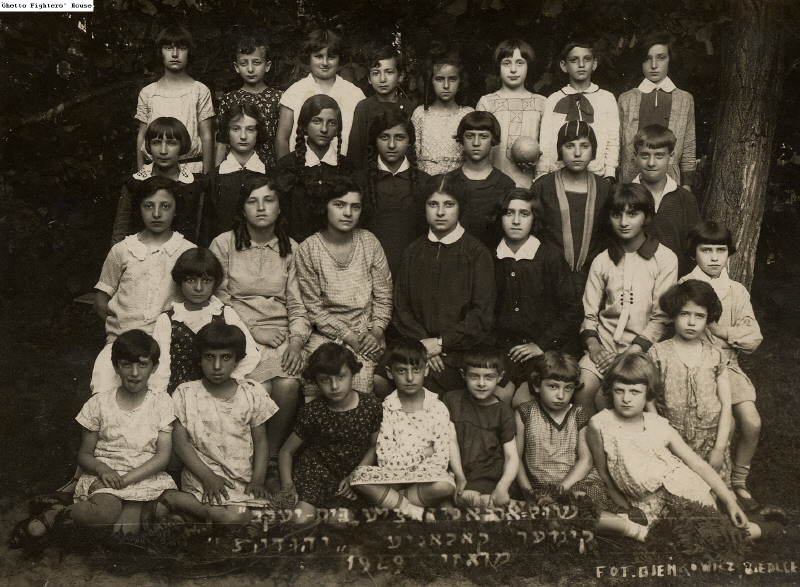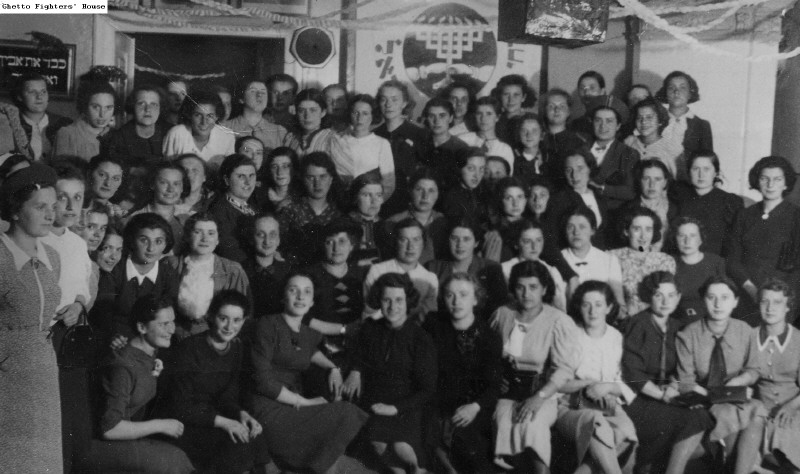In last week’s blog post, I wrote about the conventions of the class photo, with their straight rows and unwritten rule that each face must be visible, as expressing the double values of unity and individuality, a (singular) class composed of unique individuals.
But Bais Yaakov class photos often push the edges of these conventions, featuring groups of classmates in unusual settings or including unusual objects beyond the ubiquitous class signs.
As a movement that prized nature, and perhaps also because of issues of lighting, students were often photographed outside their classrooms, either among the trees on outings or in the summer colonies or just outside the school buildings.
And the “props” that distinguish some of these photos signal the Bais Yaakov participation in a youth culture that prized sports and other physical activities. For instance, in the photo of the girls in the Yehudis summer colony, clearly taken by a professional photographer, one student lightly holds a ball that is clearly visible, perfectly ranged among the faces of the row beneath her.
Among the most intriguing photos we have is one of seminary students that seems more amateur in its arrangements. In this photo, from the Ghetto Fighters’ House photo archive, the students—from the Krakow Seminary—are not ranged in neat rows, and some faces in the back of the group are obscured or cast into shadow by others. The first row, which in other photos often features the youngest students cross-legged on a floor or the ground, here shows young women seated, with each face visible. And yet one student, along with the woman who might be a teacher on the far left (her hair seemingly covered with a hat), looks to the right rather than straight at the camera, a remarkably natural smile suggesting that she has seen something that amused her. Among the other young women are others with bright expressions, and one woman in the back leans forward toward the viewer.
So, too, do the young women’s hands express casual connection. Gutta Sternbuch (a family friend whom I recognized in the second row left) has her hand on the shoulder of her grinning classmate, and the fingers of two women in the center of the front row seem to brush together.
Perhaps this casualness owes something to the setting of the photo, which seems to be a sukkah—itself a less formal “house”. Homemade strings of paper and a paper lampshade decorate the ceiling, signs decorate the walls at the back, and a door stands ajar, perhaps the door connecting to the inside of the building. The sign at the back right shows a stylized and modernist menorah, with two hands joined at the base, in a visual echo of the two hands that meet near the center of the front row.
And at the left, another half-obscured sign reflects the religious values of this gathering more textually, “honor your father and your mother.” Bais Yaakov stressed this commandment, and Sarah Schenirer wrote about it in some detail.
But the sign stands in some contrast with the image that obscures it, in which young women took pride in a community they had created (and perhaps also in a structure that they had built, or at least decorated) in the absence of fathers and mothers, and in the presence of the companionship and shared experience that was at the heart of the seminary experience.

Naomi Seidman is the Chancellor Jackman Professor of the Arts in the Department for the Study of Religion at the University of Toronto and a 2016 Guggenheim Fellow; her 2019 book, Sarah Schenirer and the Bais Yaakov Movement: A Revolution in the Name of Tradition, explores the history of the movement in the interwar period.



